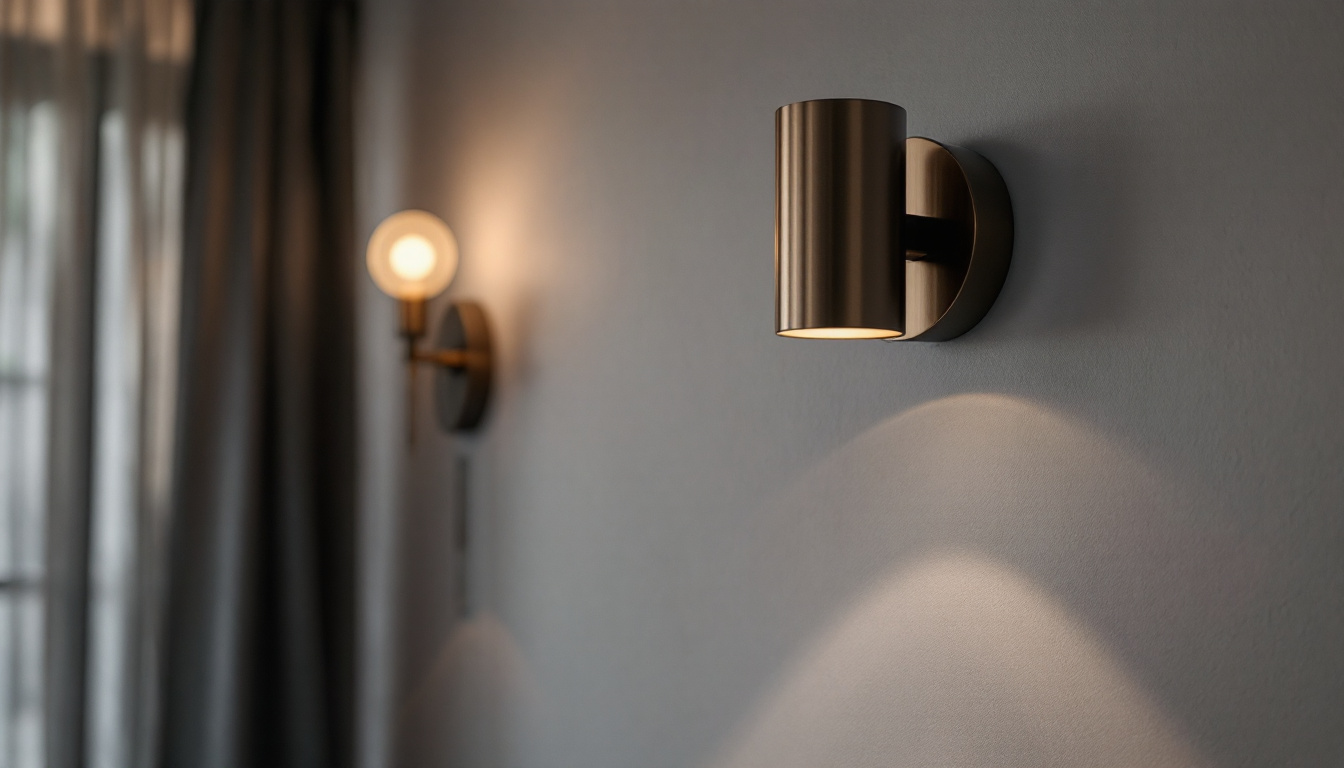
In the ever-evolving landscape of outdoor lighting, LED technology stands out as a game-changer for lighting contractors. With its energy efficiency, longevity, and versatility, LED lighting has become the preferred choice for various applications, from residential gardens to commercial parking lots. This article delves into the advantages of outdoor LED lighting, practical considerations for installation, and tips for lighting contractors to streamline their projects.
LED lighting offers numerous benefits that make it an attractive option for outdoor applications. Understanding these advantages can help lighting contractors make informed decisions and present compelling options to their clients.
One of the most significant advantages of LED technology is its energy efficiency. LEDs consume significantly less power compared to traditional incandescent or halogen bulbs. This reduction in energy consumption translates to lower utility bills for clients, making LED lighting an economically viable choice. Furthermore, energy-efficient lighting solutions align with growing environmental concerns, appealing to eco-conscious customers. As cities and municipalities strive to reduce their carbon footprints, the adoption of LED lighting in public spaces is becoming increasingly common, contributing to sustainability goals on a larger scale.
LED lights are known for their impressive lifespan, often lasting up to 25 times longer than traditional bulbs. This longevity reduces the frequency of replacements, saving both time and money for contractors and clients alike. Additionally, LEDs are more durable and resistant to shock, vibrations, and extreme weather conditions, making them ideal for outdoor settings. Unlike traditional bulbs that can easily break or fail in harsh environments, LEDs maintain their performance over time, ensuring reliable illumination. This resilience is particularly beneficial for areas prone to severe weather, where consistent lighting is crucial for safety and security.
LED technology allows for a wide range of designs and applications. From pathway lights to floodlights, the adaptability of LEDs enables contractors to meet diverse client needs. Furthermore, the availability of various color temperatures and brightness levels allows for customized lighting solutions that enhance the aesthetic appeal of outdoor spaces. This versatility extends to smart lighting options, where LEDs can be integrated with smart home systems for enhanced control and automation. By offering features such as dimming capabilities and programmable schedules, contractors can provide clients with solutions that not only illuminate but also enhance the functionality and ambiance of outdoor areas, making them perfect for entertaining or creating a welcoming atmosphere.
While the benefits of LED lighting are clear, successful installation requires careful planning and consideration. Lighting contractors must be aware of various factors that can impact the effectiveness and efficiency of outdoor LED systems.
LED lights operate on low voltage, typically 12V or 24V, which requires a compatible power supply. Contractors must assess the power requirements of the chosen fixtures and ensure that the power supply can handle the total wattage. This step is crucial to avoid overloading the system and to ensure optimal performance. Additionally, it is important to consider the distance between the power supply and the fixtures; voltage drop can occur over long runs, potentially leading to dimmer lights. Using thicker gauge wire can help mitigate this issue, ensuring that the lights receive adequate power regardless of their placement.
Selecting the appropriate fixtures is essential for achieving the desired lighting effect. Contractors should consider factors such as beam angle, lumen output, and color rendering index (CRI) when choosing fixtures. A well-chosen fixture can enhance the landscape, improve safety, and create an inviting atmosphere. Furthermore, understanding the specific application is vital; for instance, pathway lights may require a different lumen output compared to accent lights for trees or architectural features. By carefully matching the fixtures to their intended purpose, contractors can create a cohesive and functional lighting design that not only meets aesthetic goals but also serves practical needs.
Given the outdoor environment, it is vital to ensure that all fixtures and connections are weatherproof. Using proper sealing methods and selecting fixtures rated for outdoor use can prevent moisture damage and prolong the lifespan of the lighting system. Additionally, employing correct installation techniques, such as secure mounting and proper wiring, is crucial for safety and functionality. It is also advisable to incorporate protective measures against extreme weather conditions, such as using fixtures with higher IP ratings for areas prone to heavy rain or snow. Regular maintenance checks should be scheduled to ensure that all components remain in good condition, as this proactive approach can help identify potential issues before they escalate into costly repairs.
Efficiency in project management can significantly impact a contractor’s bottom line. By adopting streamlined processes, lighting contractors can enhance productivity and deliver projects on time. This not only improves client satisfaction but also strengthens the contractor’s reputation in a competitive market, leading to more referrals and repeat business.
Thorough pre-project planning is essential for a successful installation. This phase should include site assessments, client consultations, and detailed project timelines. By understanding the client’s vision and the site’s specific requirements, contractors can avoid potential setbacks during installation. Additionally, conducting risk assessments during this phase can help identify any potential challenges that may arise, allowing contractors to devise contingency plans and allocate resources effectively.
Incorporating technology into the workflow can drastically improve efficiency. Project management software can help contractors track progress, manage schedules, and communicate with team members. Additionally, using design software can aid in visualizing the lighting layout, allowing clients to see the proposed design before installation begins. Furthermore, leveraging mobile applications can enable on-site teams to access project information in real-time, facilitating quick decision-making and enhancing collaboration among team members, regardless of their location.
Investing in training and development for team members can enhance skills and knowledge related to LED technology and installation techniques. Regular training sessions can keep the team updated on the latest advancements in LED technology, ensuring they are well-equipped to handle various projects. Moreover, fostering a culture of continuous learning can encourage employees to share insights and best practices with one another, ultimately leading to a more cohesive and skilled workforce. This not only boosts morale but can also lead to innovative solutions that set a contractor apart from the competition.
Despite the advantages of LED lighting, contractors may encounter challenges during installation and maintenance. Understanding these challenges and their solutions can help contractors navigate potential obstacles more effectively.
Clients often have high expectations regarding the performance and aesthetics of outdoor lighting. To manage these expectations, contractors should maintain open communication throughout the project. Providing clients with realistic timelines, explaining the benefits of LED technology, and discussing potential limitations can foster trust and satisfaction. Additionally, showcasing previous projects through a portfolio or offering virtual simulations can help clients visualize the final outcome, ensuring they are aligned with the contractor’s vision. This proactive approach not only sets the stage for a smoother project but also enhances the client’s overall experience, making them more likely to recommend the contractor to others.
Technical issues can arise during installation, such as flickering lights or inconsistent brightness. Contractors should be prepared to troubleshoot these problems by checking connections, ensuring compatibility between fixtures and power supplies, and consulting manufacturer guidelines. Having a solid understanding of LED technology will enable contractors to address issues promptly and effectively. Furthermore, staying updated on the latest advancements in LED technology can provide contractors with innovative solutions to common problems. For instance, utilizing smart lighting systems that allow for remote monitoring can help in identifying issues before they escalate, ultimately saving time and resources during the installation and maintenance phases.
While LEDs require less maintenance than traditional lighting solutions, periodic checks are still necessary to ensure optimal performance. Contractors should educate clients on basic maintenance practices, such as cleaning fixtures and checking for loose connections. Offering maintenance services can also create additional revenue streams for contractors. Moreover, implementing a scheduled maintenance plan can help clients avoid unexpected issues, ensuring their outdoor lighting remains functional and aesthetically pleasing year-round. Providing clients with a checklist or a simple guide on seasonal maintenance tasks can empower them to take an active role in the upkeep of their lighting systems, fostering a sense of ownership and satisfaction with their investment.
The outdoor LED lighting industry is continually evolving, with new trends emerging that can shape the future of lighting design and installation. Staying informed about these trends can help contractors remain competitive and offer cutting-edge solutions to clients.
Smart lighting technology is gaining traction in outdoor applications. Features such as remote control, scheduling, and integration with home automation systems are becoming increasingly popular. Contractors should consider incorporating smart lighting options into their offerings to meet the growing demand for intelligent solutions.
As sustainability becomes a priority, solar-powered LED lighting is gaining popularity. These systems harness solar energy, reducing reliance on traditional power sources and minimizing environmental impact. Contractors should explore solar options, particularly for remote areas where traditional electrical installations may be impractical.
Advancements in LED technology are allowing for more sophisticated color and lighting effects. Dynamic color-changing LEDs and programmable lighting systems can create stunning visual displays, making outdoor spaces more engaging. Contractors can leverage these innovations to offer unique and customizable lighting solutions that enhance the overall experience.
Outdoor LED lighting presents a multitude of advantages for lighting contractors, from energy efficiency to design versatility. By understanding the key considerations for installation, streamlining project workflows, addressing common challenges, and staying abreast of future trends, contractors can simplify their processes and enhance client satisfaction. As the demand for outdoor lighting solutions continues to grow, embracing LED technology will undoubtedly position contractors for success in this competitive industry.
Ready to elevate your lighting projects with the efficiency and sophistication of LED technology? Look no further than LumenWholesale for all your outdoor lighting needs. We provide contractors with the highest quality, spec-grade lighting products at prices that can’t be beaten. Say goodbye to local distributor markups and hello to a vast selection of reliable, high-performance lighting that meets the most stringent industry standards. Plus, with free shipping on bulk orders, you can stock up on premium lighting solutions without worrying about hidden fees. Make the smart choice for your business and your clients. Discover the perfect blend of quality, affordability, and convenience at LumenWholesale — your destination for Wholesale Lighting at the Best Value.

Discover the essentials of creating a compelling lighting website in just five minutes.

Discover essential insights into the world of LED strip lighting with our comprehensive guide tailored for lighting contractors.

Discover essential insights on hanging light wall brackets for lighting contractors.

Discover how lighting contractors can enhance their projects and boost client satisfaction with the strategic use of sconce wall lights.